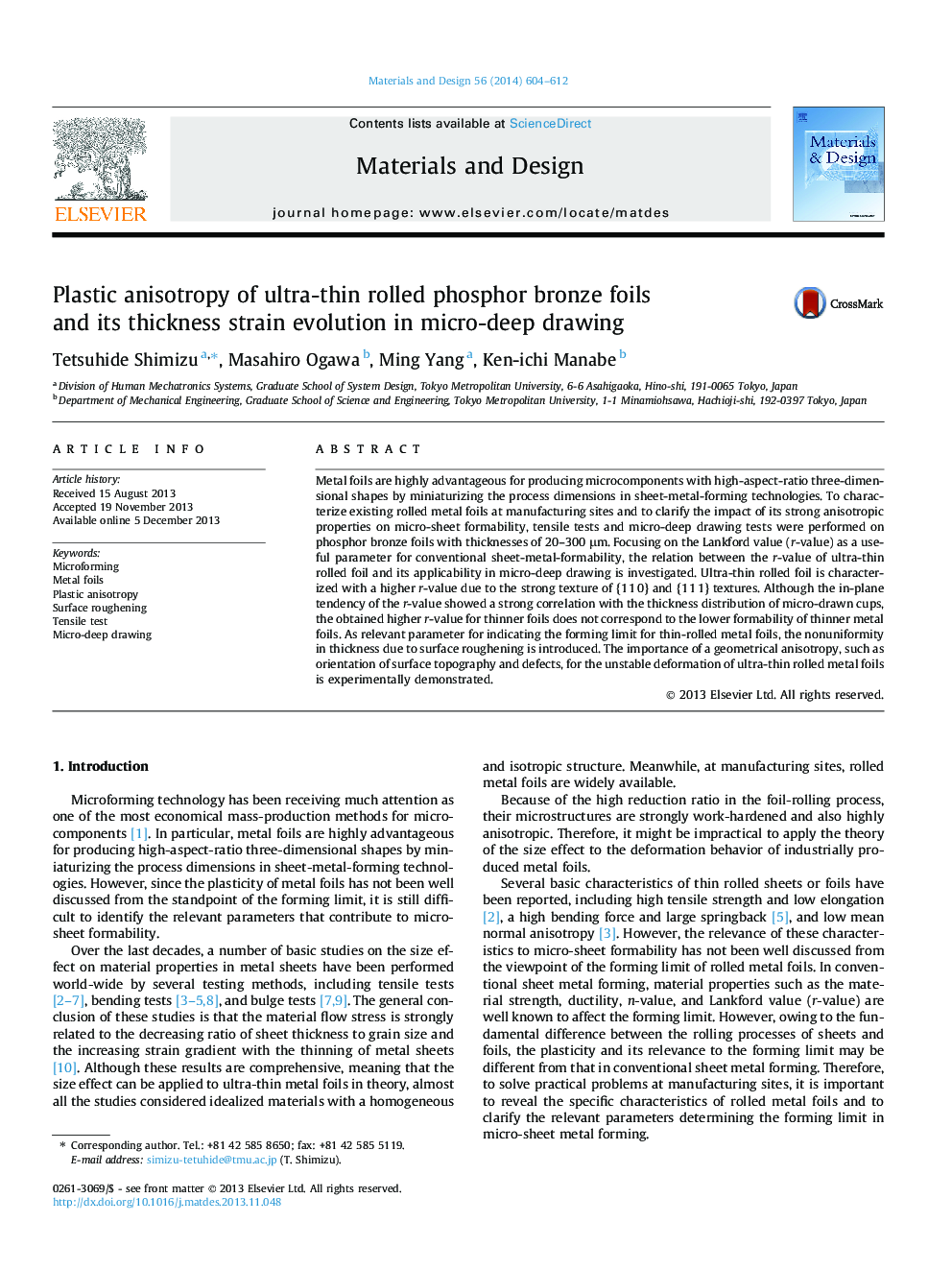| کد مقاله | کد نشریه | سال انتشار | مقاله انگلیسی | نسخه تمام متن |
|---|---|---|---|---|
| 829482 | 1470341 | 2014 | 9 صفحه PDF | دانلود رایگان |

• Thickness strain distribution in micro-deep drawing of ultra-thin rolled foils are demonstrated (83).
• Ultra-thin rolled foil elongates in 90° to RD more than 0° to RD (64).
• Strong {111} texture due to high rolling reduction for thin foil makes r-value higher (85).
• In spite of high r-value, thickness reduction of foil is more than thicker sheet (80).
• Surface roughening is responsible for unstable deformation in micro deep drawing (80).
Metal foils are highly advantageous for producing microcomponents with high-aspect-ratio three-dimensional shapes by miniaturizing the process dimensions in sheet-metal-forming technologies. To characterize existing rolled metal foils at manufacturing sites and to clarify the impact of its strong anisotropic properties on micro-sheet formability, tensile tests and micro-deep drawing tests were performed on phosphor bronze foils with thicknesses of 20–300 μm. Focusing on the Lankford value (r-value) as a useful parameter for conventional sheet-metal-formability, the relation between the r-value of ultra-thin rolled foil and its applicability in micro-deep drawing is investigated. Ultra-thin rolled foil is characterized with a higher r-value due to the strong texture of {1 1 0} and {1 1 1} textures. Although the in-plane tendency of the r-value showed a strong correlation with the thickness distribution of micro-drawn cups, the obtained higher r-value for thinner foils does not correspond to the lower formability of thinner metal foils. As relevant parameter for indicating the forming limit for thin-rolled metal foils, the nonuniformity in thickness due to surface roughening is introduced. The importance of a geometrical anisotropy, such as orientation of surface topography and defects, for the unstable deformation of ultra-thin rolled metal foils is experimentally demonstrated.
Journal: Materials & Design - Volume 56, April 2014, Pages 604–612